The magical mythology of mad March hares
The witch, the trickster, the fertility symbol and the real Easter Bunny: Marianne Taylor explores the enduring magic of the brown hare.

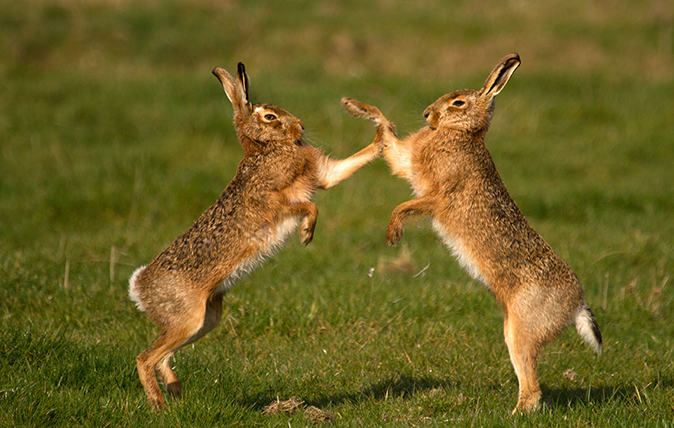
I rested the end of my long lens on the car’s window frame and slowly put my eye to the viewfinder. The leveret in the long grass was close enough to fill half of the frame. Hunched up in hair-trigger tension, hoping it remained unseen, the little animal didn’t twitch a muscle even as the shutter clicked.
The one eye that I could see seemed fixed wide with fear – glassy and blank. Then, suddenly and fleetingly, it drew back its split top lip, distorting its gentle face into a bizarre, almost menacing leer. Hares are prey to many animals, including us, but they have a strange, almost sinister side that can stop us in our tracks and make us think twice.
The hare is master of the quick turn. On the run, it evades capture through hairpin jinks, flips and leaps, switching from victim to victor, from here to gone. This mercurial character, which makes the hare so difficult to pin down in reality and in imagination, has inspired copious mythology. It’s hard to think of any other animal that appears so often and in so many guises within our folklore. The hare of legend is in constant danger, but she is also proud, wicked and inventive, leaving a trace of magic in every pawprint.

Brown hares are relative newcomers to the British Isles and are thought to have been imported from mainland Europe in the Iron Age to provide sport for hunters and food for everyone. It is their upland cousin, the mountain hare, that’s a true British native, but most of our folklore relates to the brown hare. This reflects how successfully they settled into their new home, proliferating across the open lowlands and soon becoming familiar to all.
In the Middle Ages, hares were linked, like certain other enigmatic creatures, to witchcraft. A tale of the time tells of a hunter who wounded a hare and followed its blood trail back to a cottage in the woods. Here, he found an old woman at her stove – she claimed the fresh cut on her arm was the result of an accident with a kitchen knife. However, it was common knowledge that, with the right incantation, a witch could assume a hare’s shape, complete with its speed, power and ability to vanish at will. The circumstantial evidence was enough to condemn the woman to death.
Every notable trait that the hare possesses has inspired its own legends, but all are there for a sound survival reason. That split lip, for example, is often said to be an injury sustained when a trickster hare took a practical joke too far and earned himself a smack in the face. In reality, it simply allows him to get his teeth to the base of a plant stem more easily.
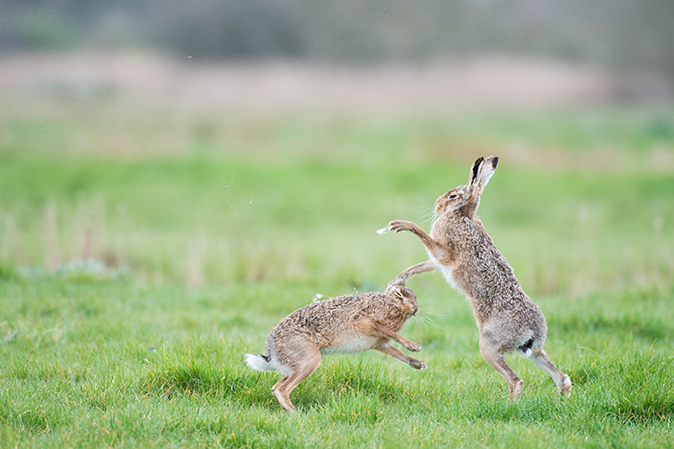
As for that dazzling speed, power and ability to turn on a sixpence that so impress and frustrate us, these are the hare’s only real means of self-defence once its cover is blown. With no kind of burrow or other safe haven to hide in, it has to be able to outrun each and every native predator – and it can. When it comes to picking a mate, the ability to run hard, fast and strong is desired above all. The female – as usual, it is females that choose – tests out her suitors on Nature’s running track and this leads to the most notorious hare behaviour of all.
Exquisite houses, the beauty of Nature, and how to get the most from your life, straight to your inbox.
Madness, devilry, feminine wiles and the shifting mood of the moon: all of these come together in the reality and mythology of the hare as winter comes to an end. You might see hares chase and box at other times, but head for open fields on a brightly moonlit March night for your best chance to see the spectacle. At first glance, it’s chaos, but watch longer and you’ll see the pattern.
The males anxiously follow the larger, more self-assured females and give chase when their romantic target sprints playfully away. At the same time, they attempt to see off rival males. If a male tries to get too close too soon, the female stands up on her hind feet and turns on him, striking with her forepaws, forcing him to defend himself and they box and leap and rush together and apart in a wild dance.
Only those males that demonstrate enough stamina and commitment will be permitted to mate, but it will not be many weeks before the females seek male attention again. Amazingly, they’re able to conceive while already carrying a well-developed litter inside them – the new embryos simply descend into the uterus as soon as the previous litter vacates it. The times when a female hare is not receptive to an eager male are, therefore, few and far between.
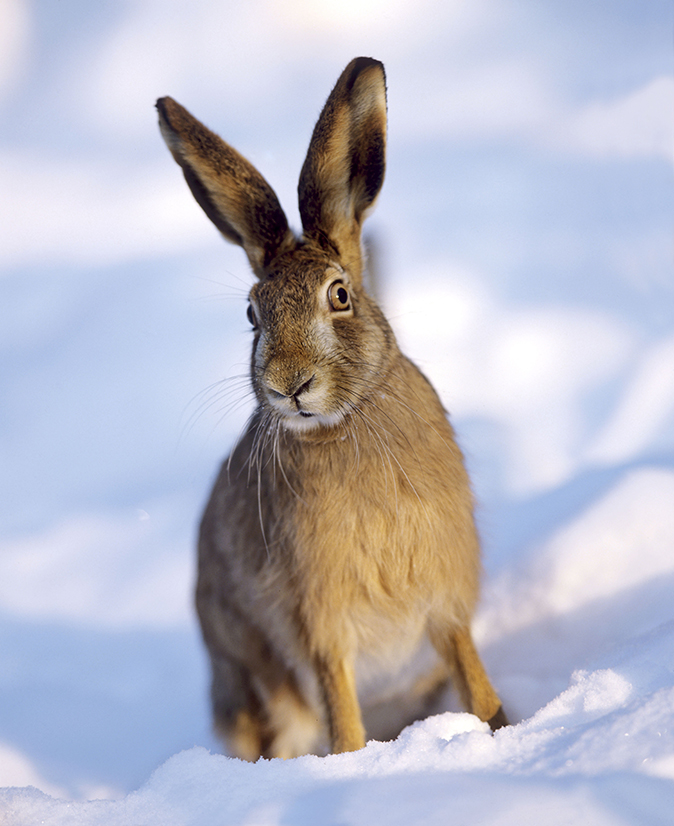
The time they devote to courtship and coupling, and the speed at which they breed, means that hares are seen as icons of fertility. No wonder the hare was long honoured in pagan rituals celebrating springtime – and eventually evolved through changing traditions into the Easter Bunny.
The full moon’s shadowy pattern has been interpreted as the shape of a hare by cultures around the world. The hare in the moon is no lost soul, however. In China, for example, it is companion to the benevolent goddess Chang’e and is brewing a potion of immortality for her people down below.
In the artistic motif of the moon-gazing hare, an earthly hare sits with head tilted upwards towards its representative in heaven. A moon-gazing hare figurine carved from jade brings good luck and long life. For flesh-and-blood hares, the daytime is for sleeping and the moon is the light under which they forage, fornicate and flee for their lives.
These creatures confound our expectations. They unsettle, they captivate, they leave us for dust. The extensive lore and legend we’ve dreamed up for them is entrancing in its own right, but there’s no substitute for setting down the books, stepping outside and seeking out the animal itself. The hare’s true magic is in its reality and is all its own.
Marianne Taylor is the author of ‘The Way of the Hare’ (£16.99, Bloomsbury)
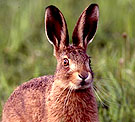
Brown hare numbers rising after conservation efforts
Brown hares are increasing in number where farms are encouraged to provide their ideal habitat

Credit: Alamy Stock Photo
9 fascinating facts about hares
We reveal 9 fascinating facts about our favourite spring mascot.
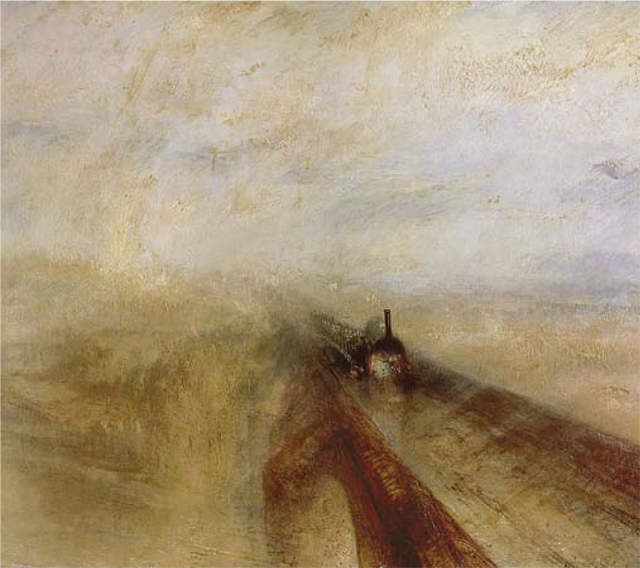
My Favourite Painting: Michael Palin
Michael Palin chooses his favourite painting for Country Life.
Country Life is unlike any other magazine: the only glossy weekly on the newsstand and the only magazine that has been guest-edited by His Majesty The King not once, but twice. It is a celebration of modern rural life and all its diverse joys and pleasures — that was first published in Queen Victoria's Diamond Jubilee year. Our eclectic mixture of witty and informative content — from the most up-to-date property news and commentary and a coveted glimpse inside some of the UK's best houses and gardens, to gardening, the arts and interior design, written by experts in their field — still cannot be found in print or online, anywhere else.
